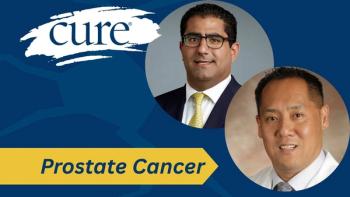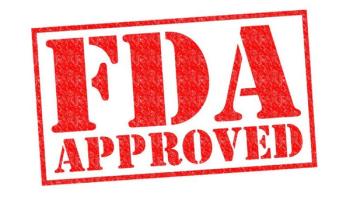
Prostate Cancer: A Doctor Can Be a Good Patient
I am Dr. Tom Arno, a retired 63-year-old MD. I write as not only a retired cardiologist, but also a cancer patient with the second most common cancer in the USA: prostate. First, a bit of science. Prostate cancer will occur in one out of every six men, and one out of four men who have, as I do, a positive family history. About 26,000 will die this year from this disease, making it the second most common cancer-related death (lung is the first). Most men, six out of 10, develop after age 65. I am 63, as was my father when he was diagnosed, underwent surgery. He lived until 93, dying of an unrelated issue.
My experiences are interesting and a bit unique. I had no symptoms, other than the fact that I felt tired and it was harder to work out, but I had no urinary or prostate warning signs. My family doctor checked the usual. All was normal, including my PSA, which was 3.0. PSA, a blood test, stands for prostate-specific antigen. This “gold standard” is not so gold. In fact, I would not even give it a bronze! In conjunction with a DRE (digital rectal exam), it is the standard to diagnose prostate disease. Normal is 1.0-4.0, yet mine was 3.0 and I have stage 4 prostate cancer.
Many PSAs miss cancer. Many high PSAs also wrongly diagnose cancer. My experiences and learning as an MD told me 3.0 was normal, but for the last 10 years my PSA had been 2.6-2.5. Three did not sit well with me or my family doctor. Having a positive family history, I decided to see my urologist, Dr. Alan Fogel, who examined me and found nothing, but was still concerned. He explained that a PSA could be normal, as some tumors do NOT produce this protein. He ordered a test called a PHI (prostate health index) which is three tests in one, three times more specific than PSA, and groups you by risk. The next day, his office called and asked me to come in to talk over the test results.
I brought my wife, Barb, for moral support. She has been my rock through all of this. Dr. Fogel explained that patients with a positive family history are normally put on active surveillance. This means we watch and check PSAs every six months and check a PHI. If all is normal, we watch. Unfortunately, my PHI was literally “off the chart” for high risk. I had a normal PSA of 3.0 and a markedly abnormal PHI. Now what? Dr. Fogel explained that with the one to four risk of having cancer, I needed an ultrasonic biopsy, a procedure done under anesthesia, outpatient, where an ultrasound probe in placed in the rectum to visualize the prostate. Twelve biopsies are taken, six from the right lobe, six from the left lobe. He explained the risk was too high for surveillance and that now is the time to look at tissue. My biopsies were done and seven of 12 were positive for cancer.
Meet the Gleason score. The higher the number (it’s actually two numbers added together) the more aggressive and deadlier the cancer. The scale runs from a low of 2 to a high of 10. Gleason scores of 4 or 5 can generally be left alone, but 7 or higher is an issue. Well, just like med school, I scored a perfect 10 and multiple 9’s and all biopsies. Not only that, but some of the entire biopsy was over 90 percent cancer, a bad sign. Once again, we met with the doctor who explained that this is an aggressive cancer. The more aggressive the cancer, the less PSA the tumor produces, hence the PSA of 3.0. He explained the Gleason score and told me, “With this tumor, we can’t drag our feet.” We did the usually metastatic work-up, bone scan, TT MRI (an MRI of the prostate with a 3 Tesla magnet), which were all normal. The tumor was confined to prostate.
Great! I was the perfect candidate for taking out the prostate. On July 8, 2016, I underwent prostatectomy at a center of excellence, in Charleston, South Carolina, my hometown since 2010. Why a center of excellence? This is important if you want a high success rate of removing the prostate, a cure, preserving the nerves, remaining continent, and ability to maintain an erection. The surgery went fine. I’m young, in great shape, not obese, do not smoke or drink and work out daily. This was major surgery; it took me five weeks to recover. I feel great and I’m continent. Unfortunately, I am not living happily ever after!
Two days later, I received the bad news. The cancer was indeed confined to just my prostate, but one lymph node was positive. That took me from stage 1 cancer to stage 4. This is a rare one, as I learned from talking to my oncologist and radiation oncologist. Once cancer invades the lymphatics, it can go anywhere. My tumor is classified as T1c, N1 M0 (tumor not palpable or visible, spread to nodes, not metastatic to distant sights yet). I spoke with several oncologists who were well-known in the country, as well as our local radiation oncologist.
I’m the 1 in 100, the gray area no one really knows what to do with. I have a tumor that is totally confined to the gland where one node tested positive. What really shocked my wife, my family and me is that the mortality of this Gleason 9-10 tumor is very high. On the aggressive scale of one to five, it is a five, meaning it was highly aggressive. The literature is all over the board in this case, but standard therapy is two to three years of anti-hormonal therapy such as Lupron. This is analogous to not fertilizing a plant. When there is no food for the tumor, the tumor starves and dies. Then five to seven weeks of daily (Monday-Friday) radiation therapy to the pelvis. With no therapy, all five doctors agreed that I will be dead in 12 to 18 months. That is how aggressive prostate cancer can be. It all depends on your Gleason score determined by biopsy.
After great debate, talking to many doctor, getting second and third opinions and reading the literature for myself, I chose the less conventional root. Anti-hormonal therapy is necessary. Side effects, of course, were like male menopause: hot flashes, night sweats, watching that weight and muscle mass (so I will be at the gym daily now)! The other option, chemotherapy with docetaxel (Taxotere), is controversial. We all know those side effects. Frankly, I’ve always wanted to save money on shampoo. Why dual therapy? Once cancer in the lymphatic system, I have no idea where those cells are. One American study shows this drug is promising, one European study shows that it is not, but I do not want radiation due to the possible late-term side effects.
Why am I telling you this, putting it on Facebook, writing for CURE and other publications? This is a clarion call for me, a doctor, retired or otherwise. Physicians have one, and only one, major responsibility, to help others. I took an oath to do no harm and to help. I will honor that oath until I die. I have dedicated my retirement since 2008 to do exactly that. If one person has a PSA/PHI checked because of this story, and it comes back positive, I have done my job. Many things can cause PSA to be high or low, and I will provide references for your education. Be proactive. Read. See a urologist, a good one, and insist if your family history if like mine a PHI be checked. In fact, urologists recommend PSAs beginning at 35 for my son. Needless to say, do not smoke, do not be overweight, and know that African Americans are at higher risk, as are our military veterans who were exposed to Agent Orange. As for staying active, my cancer therapy begins in August for anti-hormonal therapy, and shortly after for chemotherapy. Bring it on. I’m too busy with Ham radio, being a broadcast meteorologist for multiple radio stations, and writing and publishing a book to worry about this. My cancer has renewed my faith in humanity, and in my friends. I will see my class of 70 in 2020 at our 50th reunion.
*Please read Dr. Patrick Walsh’s Book Guide to Surviving Prostate Cancer, third edition. It is an invaluable resource.
**Any money I make from my writings will be donated to the American Cancer Society.





